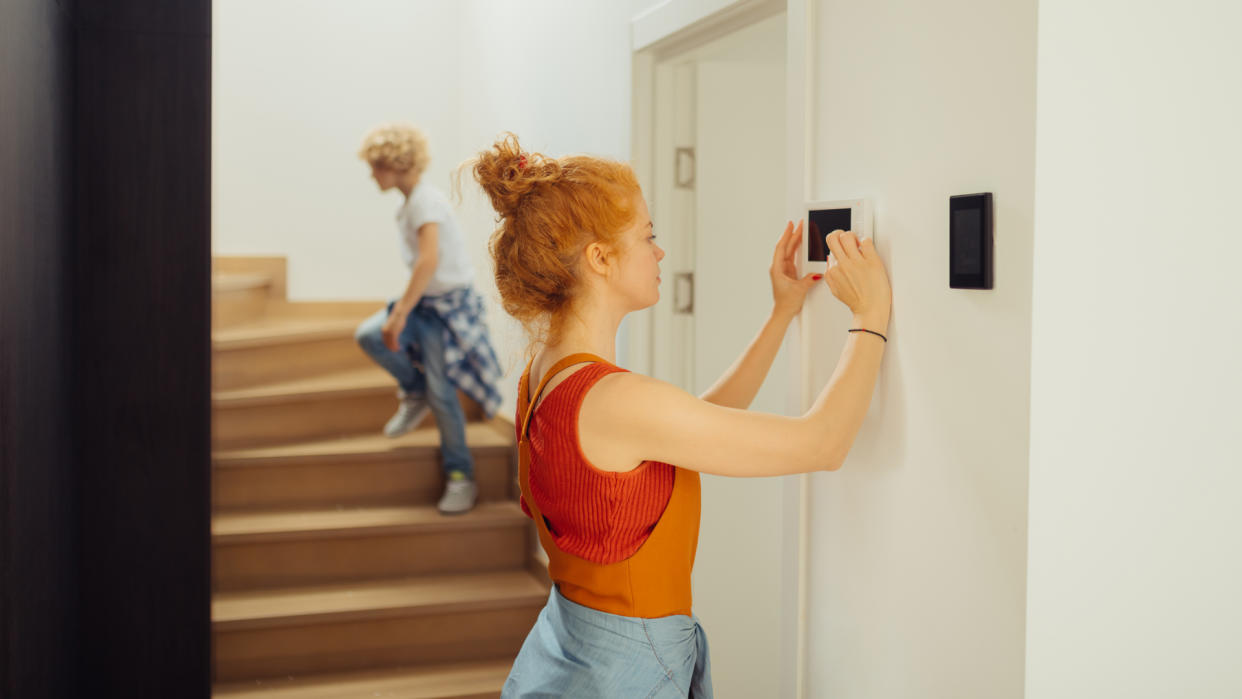Is Central Air Worth the Cost? Plus, What You Can Do Instead

When the heat of summer finally hits, it can be quite oppressive depending upon where you live. Some homes are able to keep naturally cooler than others, but many people consider installing central air conditioning to keep their homes tolerable.
See Our List: 100 Most Influential Money Experts
Read: How To Build Your Savings From Scratch
However, the costs of both installing and running central AC can be quite steep. We spoke with experts to find out whether central air is worth the cost, and what some alternatives might be.
Consider Installation Costs
If you don’t already have central air, you probably dream about how that cool air would feel during hot summers, and there’s no doubt that installing it is one of the most effective ways to cool a home down.
However, when considering the cost-effectiveness, it’s essential to remember, “Initial installation costs for central air can be quite significant, including the purchase of the system itself, ductwork installation, if not already present, and professional labor,” said Ryan Collier, an HVAC expert and company director of Heat Pump Source. “Additionally, ongoing expenses such as energy consumption and maintenance should be factored in. While central air can deliver precise temperature control throughout your home, it may not always be the most cost-effective option.”
Take Our Poll: Who Has Given You the Best Money Advice You Have Ever Received?
Central AC doesn’t come cheap, either. The average cost of both the unit plus installation will range from between $5,000 up to a whopping $12,000, according to Adam Graham, a construction industry analyst at Fixr. On average, homeowners pay around $7,000 for a 2,000-square-foot home, he said.
Installing Central Air Increases Resale Value of a Home
One consideration that has less to do with your day-to-day experience and costs is that central air can help you when you get ready to sell your home, according to Jay Sanders, a contractor and the owner of Castle Dream Construction.
“Central air has a great ROI, when selling your home it can be one of the make or break needs for a new homebuyer, especially if you live somewhere hot year round,” Sanders said.
Central air is also a great way to keep your home comfortable, and who doesn’t want to feel cool and relaxed in their homes! If central air isn’t affordable for your household you can opt for window air conditioning units, mini splits, or portable air conditioners instead.
Central Air May Save Energy
While the initial investment might seem significant, an energy-efficient AC can help you save on your electricity bills over time.
This is especially true if you choose a unit with a high energy efficiency rating to maximize your long-term cost savings, according to Ben Dhesi, the creator of the energy-saving mobile app HUGO. “Regular maintenance is also key to ensuring optimal performance and efficiency so if you do have the funds, an energy-efficient AC unit is your best bet.”
Alternatives to Central Air
If central air just isn’t in the cards for you, there are several alternatives that can provide efficient and cost-effective cooling, according to Collier.
Heat Pumps
Heat pumps are an excellent alternative as they can both cool and heat your home. Collier explained that they work by transferring heat between the indoor and outdoor units, making them highly energy-efficient.
“Heat pumps offer the added advantage of dehumidification and precise temperature control, providing a comfortable indoor environment year-round.” These range in price from $3,500 to $7,500 depending on factors such as location, technician and type of system, according to This Old House.
Ductless Mini-Split Systems
Another option, known as a ductless mini-split system, consists of an outdoor unit and one or more indoor units, which are ideal for homes without existing ductwork or for specific zones where cooling is required.
Collier said, “Ductless mini-splits provide independent temperature control for each zone, ensuring energy efficiency and personalized comfort.” On average, the cost of installing one of these is around $3,000, though it can cost quite a bit more, according to Forbes.
Evaporative Coolers
Particularly suitable for dry climates, evaporative coolers — aka swamp coolers — use water evaporation to lower indoor temperatures.
Collier explained, “They are more energy-efficient than traditional air conditioners and can significantly reduce energy costs. However, their effectiveness is dependent on the climate and humidity levels.” The average cost of these is between $1,500 and $3,500, according to Fixr.
Window Units and Portable Air Conditioners
If you can spend most of your time in a couple of rooms in your home during the hottest months, consider a window or portable air conditioning unit. “These options are typically more affordable upfront, making them popular choices for smaller spaces or temporary cooling needs,” Collier said.
While they may not provide the same level of whole-house comfort as central air, they can be cost-effective solutions for specific areas or rooms. “Ultimately, making an informed decision about cooling options involves considering factors such as upfront costs, energy efficiency, maintenance requirements, and individual comfort preferences,” he said.
He also emphasized how crucial it is to consult with a reputable HVAC professional who can assess your home’s unique characteristics and guide you in selecting the most suitable cooling solution. “They can provide expert advice, perform accurate sizing calculations, and ensure proper installation, maximizing both comfort and cost-effectiveness.”
More From GOBankingRates
This article originally appeared on GOBankingRates.com: Is Central Air Worth the Cost? Plus, What You Can Do Instead
